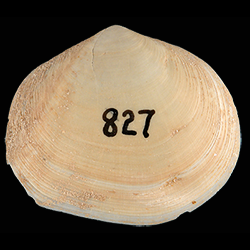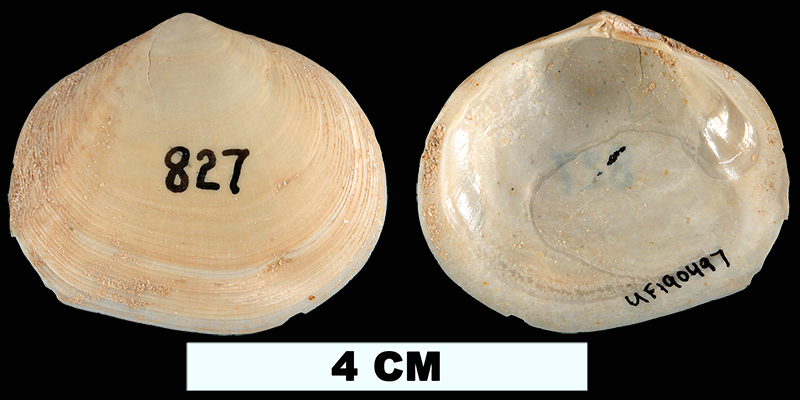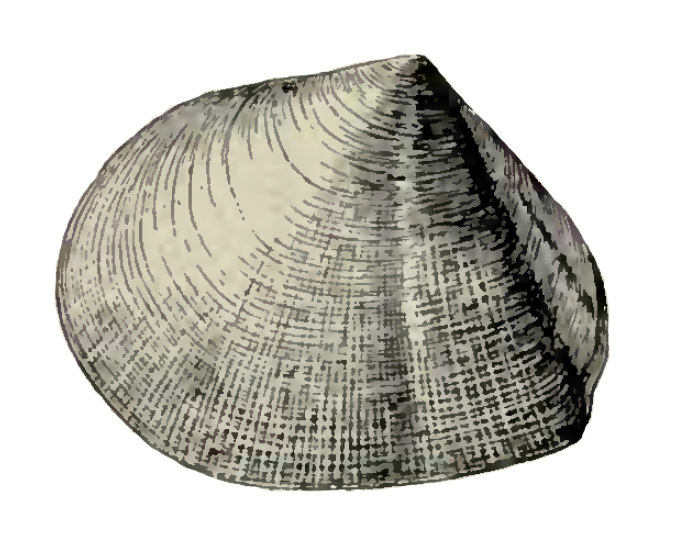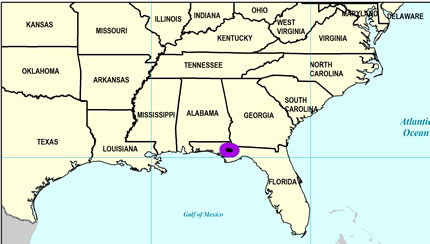
Apolymetis chipolana

- Phylum: Mollusca
- Class: Bivalvia
- Order: Imparidentia
- Family: Tellinidae
- Genus: Apolymetis
- Species: Apolymetis chipolana (Dall, 1900)
Geological Range
Early Miocene; Extinct.
Paleogeographic Distribution
Northern Florida.
Remarks
Original Description (from Dall, 1900, p. 1042):
"Oligocene of the Chipola horizon, at Alum Bluff and the Chipola River, Florida; Burns.
Shell small for the genus, nearly equilateral, not quite equivalve, the left valve slightly larger, evenly rounded in front, pointed and attenuated behind; beaks low, lunule and escutcheon deeply impressed, narrow; posterior end markedly flexed, with an obvious fold or emargination of the valve just above the posterior basal angle; surface finely radially striate, with a fine concentric lamellation which is more distinct towards the base and over the fold; pallial sinus obliquely ascending, free from the pallial line below, as in Arcopagia. Lon. 44, alt. 36, diam. 16 mm.
This species is smoother and more regular than any of the other forms known from America, and recalls M. Dombeyi of the Pacific recent fauna."
To access this description in its original formatting through Google Books, click here.
Synonymous with Metis chipolana.
Stratigraphic Occurrences
- Early Miocene
- Chipola Formation (N. FL)


